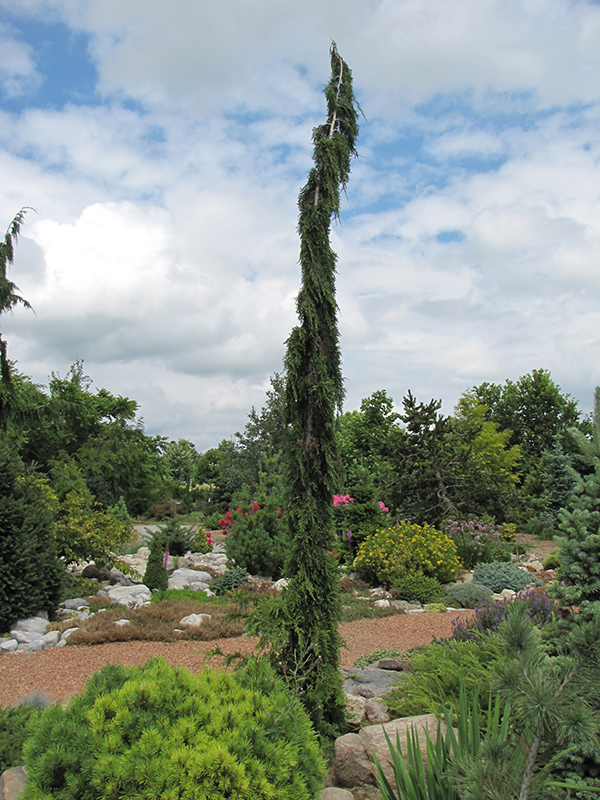Brunswick
422 Bath Road
Brunswick, ME 04011
1-800-339-8111
207-442-8111
Falmouth
89 Foreside Road
Falmouth, ME 04105
1-800-244-3860
207-781-3860
Cumberland
201 Gray Rd (Route 100)
Cumberland, ME 04021
1-800-348-8498
207-829-5619
Van den Akker Nootka Cypress
Chamaecyparis nootkatensis 'Van den Akker'
Height: 20 feet
Spread: 3 feet
Sunlight:
![]()
![]()
Hardiness Zone: 4b
Other Names: Alaska Cedar, Nootka Falsecypress, Xanthocyparis
Description:
A striking, extremely columnar selection with pendulous branches that drape downward, very close to the trunk; a great accent tree that puts an exclamation point on the landscape
Ornamental Features
Van den Akker Nootka Cypress is primarily valued in the landscape for its rigidly columnar form. It has bluish-green evergreen foliage. The scale-like sprays of foliage remain bluish-green throughout the winter. The shaggy antique red bark and gray branches add an interesting dimension to the landscape.
Landscape Attributes
Van den Akker Nootka Cypress is an open evergreen tree with a strong central leader and a narrowly upright and columnar growth habit. Its average texture blends into the landscape, but can be balanced by one or two finer or coarser trees or shrubs for an effective composition.
This is a relatively low maintenance tree. When pruning is necessary, it is recommended to only trim back the new growth of the current season, other than to remove any dieback. It has no significant negative characteristics.
Van den Akker Nootka Cypress is recommended for the following landscape applications;
- Accent
- Vertical Accent
- General Garden Use
Planting & Growing
Van den Akker Nootka Cypress will grow to be about 20 feet tall at maturity, with a spread of 3 feet. It has a low canopy with a typical clearance of 1 foot from the ground, and is suitable for planting under power lines. It grows at a medium rate, and under ideal conditions can be expected to live for 70 years or more.
This tree does best in full sun to partial shade. It prefers to grow in average to moist conditions, and shouldn't be allowed to dry out. It is not particular as to soil type or pH. It is quite intolerant of urban pollution, therefore inner city or urban streetside plantings are best avoided, and will benefit from being planted in a relatively sheltered location. Consider applying a thick mulch around the root zone in winter to protect it in exposed locations or colder microclimates. This is a selection of a native North American species.

